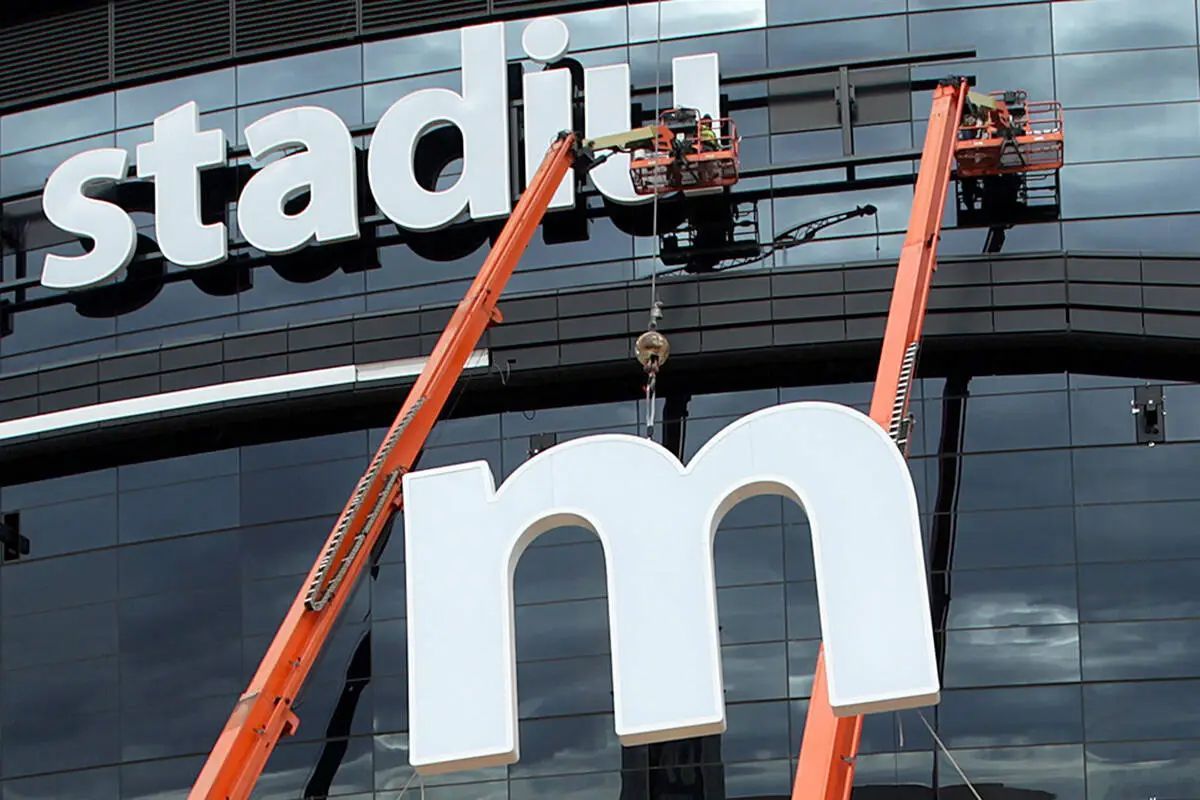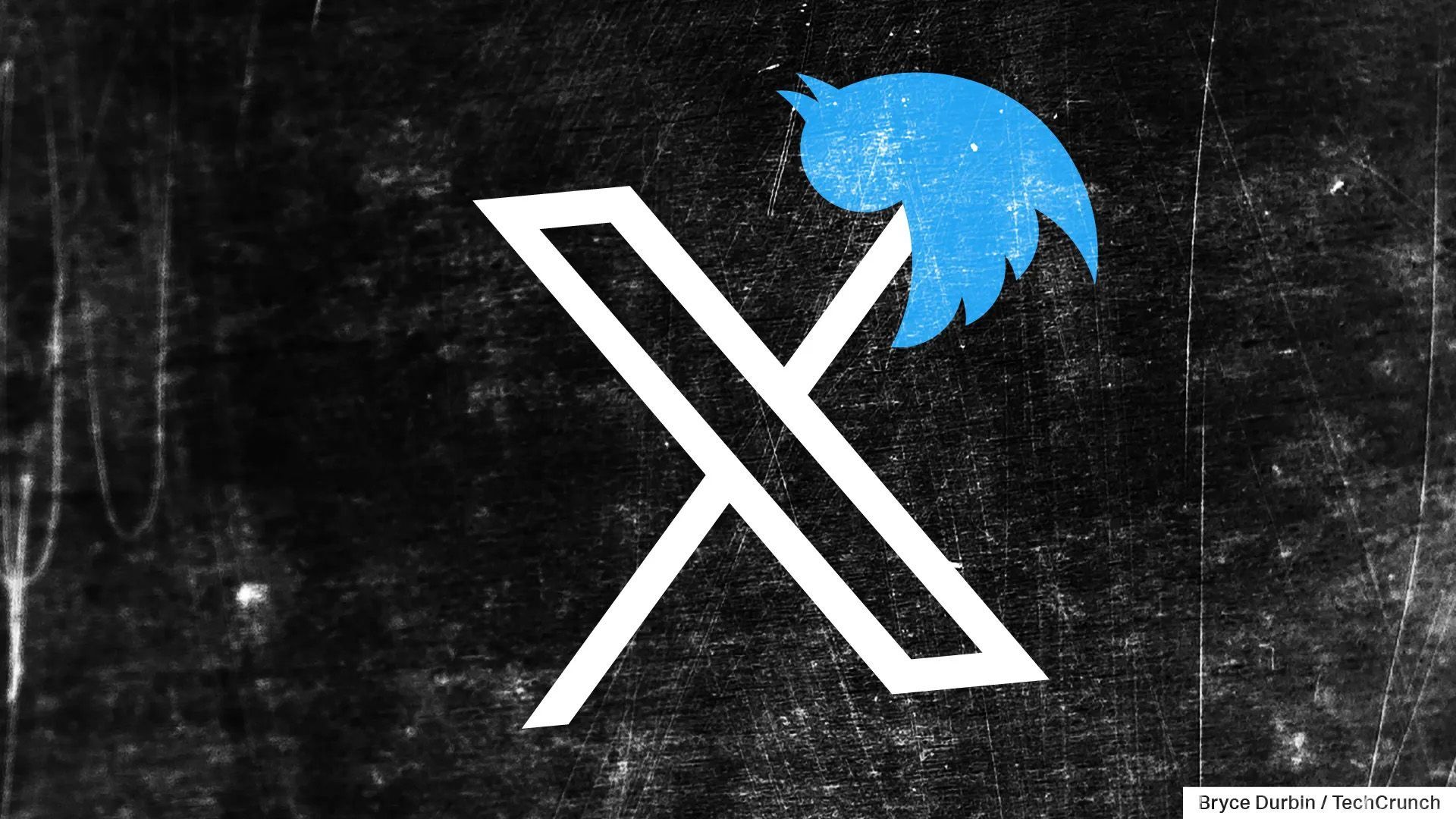HUMANIZE TECH
Give your tech brand a soul.
Welcome to Humanize Tech, the resource hub for technology leaders who grasp the strategic importance of branding.
Any tech brand can perform better if it connects with people on an emotional level. If it communicates meaning, not just features. If it's human. This is the place to find the tools, tips, and resources you need to craft stories that humanize your tech brand. Enjoy.

In marketing, we love a good acronym. But let’s be real— USP (Unique Selling Proposition) is starting to feel like one of those legacy systems we all pretend still has value because it’s “core to the business.” You know the type: old, clunky, and painfully out of sync with how people make decisions today.

Companies with groundbreaking tech, elegant architecture, and technical excellence regularly lose to competitors with inferior offerings but stronger brands. This isn't just bad luck — it's the natural outcome of a fundamental misunderstanding about what drives purchase decisions. The Differentiation Trap For decades, B2B marketers have obsessed over differentiation — the pursuit of objective, feature-based superiority. Product marketers scrutinize competitors, searching for that elusive technical advantage to highlight in comparison charts and sales presentations. But here's the uncomfortable truth: sustained differentiation is rare and fleeting. In mature categories with dozens or hundreds of competitors, most products do essentially the same thing. Any technical advantage you establish today will be copied tomorrow. Distinctiveness: The True Driver of Success While differentiation fades, distinctiveness endures. Let's look at three B2B tech companies that succeeded not through superior features, but through brand distinctiveness: Slack vs. Enterprise Messaging When Slack entered the enterprise messaging space, it faced established competitors with similar core functionality. Slack's success wasn't driven by unique features but by its distinct brand identity — playful, human, and focused on reducing "work about work." Their distinctive visual identity (with its consistent color palette and friendly illustrations), conversational tone, and memorable tagline ("Where work happens") created an emotional connection that technical specs couldn't match. What mattered wasn't that Slack could do things others couldn't—it was that Slack felt different. HubSpot vs. Marketing Automation HubSpot didn't win because its marketing automation tools were objectively superior to competitors. It won by creating a distinct brand centered around the concept of "inbound marketing"—a term they essentially invented and owned. Their orange branding, educational content strategy, and consistent message about helping businesses "grow better" made them instantly recognizable in a sea of sameness. HubSpot's distinctive approach created memory structures that triggered recall when prospects were ready to buy. Stripe vs. Payment Processing Payment processing is perhaps the most commoditized B2B technology category imaginable. Yet Stripe emerged victorious not through revolutionary features, but through a distinct brand identity built around developer experience. Their minimalist design, developer-friendly documentation, and consistent message about "infrastructure for the internet economy" made them immediately identifiable. While competitors talked about transaction fees and compliance, Stripe created a distinct identity that resonated with their technical audience. Strategies for Building a Distinct B2B Technology Brand Embrace a Signature Visual System — Develop a visual identity that stands out in your category. If everyone uses blue and corporate photography, consider bold colors and custom illustrations. Your visual system should be immediately recognizable even without your logo present. Find your SMIT — Identify the Single Most Important Truth (SMIT) about your brand. What do you do exceptionally well and what do your customers care deeply about? This is a crucial intersection of opportunity. Make this the heartbeat of your story. Own it. Be known for it. Own a Category Concept — HubSpot owned "inbound marketing." Drift owned "conversational marketing." Gong owned "revenue intelligence." Creating and owning a category concept gives your brand a distinctive place in prospects' minds. Develop a Consistent Voice — Your written and verbal communication should feel consistent and distinctive. Whether it's Mailchimp's cheerful helpfulness or IBM's authoritative expertise, a consistent voice builds recognition over time. Create Distinctive Brand Assets — Develop assets that trigger instant recognition: Salesforce's cloud logo, Twilio's red API curl brackets, or Zendesk's smiling Buddha. These distinctive elements become shortcuts to brand recall. Messaging and Visual Identity: Two Sides of the Same Coin Perhaps the most critical insight about brand distinctiveness is that messaging and visual identity must be developed in tandem , not in isolation. Too often, B2B companies treat these as separate workstreams: Marketing develops messaging based on product features Design creates visual identity based on aesthetic preferences This disconnected approach produces forgettable brands. Truly distinctive B2B technology brands understand that visual elements should reinforce messaging themes, and messaging should align with visual impressions. Consider Notion, whose minimalist visual design perfectly complements its message about reducing workspace clutter. Or GitHub, whose Octocat mascot reinforces its distinct developer-focused culture. The Shift from What to Who Ultimately, brand distinctiveness requires shifting focus from what your product does to who your company is — and perhaps more importantly how it makes your customers feel . Features can be copied, but a cohesive, authentic brand identity is much harder to replicate. In a world where technical differentiation is fleeting, distinctiveness is what sticks. The most successful B2B technology companies understand this fundamental truth: customers don't just buy better products — they buy into distinctive brands that resonate with their values, aspirations, and identity. Want to shift from feature-based differentiation to brand-based distinction? Let's chat.

Brand transformation is more than linguistic gymnastics — it's a multidimensional shift that requires both visual and verbal integration to be fully understood and executed. As branding professionals, we often find ourselves at the intersection of words and imagery, negotiating the complex relationship between what is said and what is seen. Beyond Words: The Dual Nature of Brand Understanding When we consider how brands evolve and transform, we must acknowledge that positioning and messaging alone cannot capture the full essence of a rebrand. That's because a brand also lives in the visual impact of its logo, the emotional response to its color palette, the tactile experience of its products, and the psychological associations formed through consistent imagery. These elements create meaning in ways that transcend verbal explanation. This integrated nature of brand understanding presents both challenges and opportunities for brand strategists and agencies. Those who rely solely on brand messaging frameworks often miss the deeper, more intuitive connections that visual elements forge with audiences. Conversely, those who neglect verbal precision may create beautiful but meaningless brand experiences. The Strategist's Dilemma This reality creates a fascinating paradox for brand strategists. On one hand, it's a blessing — those who master the integration of visual and verbal thinking possess a competitive advantage that purely analytical thinkers cannot match. They can navigate the subtleties of brand transformation with a more complete toolkit, sensing shifts in cultural meaning that might be invisible to others. On the other hand, it presents a curse — how do we communicate about something that partially exists beyond the realm of words? How do we justify decisions that are partly intuitive? How do we demonstrate value when some of the most important aspects of our work resist straightforward measurement or explanation? Embracing Integrated Thinking The most successful brand transformations occur when strategists embrace both modes of thinking: Understanding the rational and emotional components of brand perception Recognizing when to prioritize visual impact over verbal explanation (and vice versa) Developing frameworks that respect both analytical rigor and creative intuition Communicating in ways that engage both logical and visual processing Moving Forward As the branding landscape continues to evolve, the integration of visual and verbal thinking becomes not just advantageous but essential. The brands that resonate most deeply with audiences are those that achieve coherence across all dimensions of experience. By acknowledging the limitations of purely linguistic approaches and embracing the full spectrum of how meaning is created, brand strategists can navigate transformation more effectively—even if they sometimes struggle to put into words exactly why something works. The Speak! Approach: Integration in Action At Speak!, we've built our entire agency model around the principle that visual identity and messaging strategy must be conceived and developed in concert — never in isolation. This integrated approach isn't just a philosophical stance; it's the foundation of our process and the key to our success in transforming brands. Rather than having verbal and visual specialists only intersect when work is handed off, we are cross-disciplinary teams where messaging strategists and visual designers work side by side from day one. Our brand strategy function (that's me) leads stakeholder interviews and workshops but our art director is always on the call and not just as a passive listener. Engaged. Asking hard questions. Poking holes. This ensures that every strategic decision considers both dimensions simultaneously. The benefits of our integrated approach are evident in the results we deliver: Greater Coherence : When messaging and visuals grow from the same strategic foundation, they naturally reinforce each other, creating a brand experience that feels seamless and purposeful. Deeper Resonance : Brands that speak to both the rational mind (through clear messaging) and the intuitive mind (through visual impact) create more powerful and lasting impressions with audiences. Faster Alignment : Our clients spend less time reconciling conflicting approaches from different specialists and more time refining a unified strategic direction. Unexpected Solutions : The creative tension between verbal and visual thinking often leads to breakthrough ideas that neither approach would have discovered independently. Our clients often tell us that this integrated process not only delivers superior results but also provides them with a new lens through which to understand their own brands. By experiencing the power of visual-verbal synergy in action, they gain insights that transform not just their brand assets but their entire approach to brand management.

Let's cut to the chase: In a world drowning in digital noise and AI-generated content, brand authenticity isn't just a nice-to-have — it's your survival kit. Today's tech-savvy customers can smell manufactured messaging from ten browser tabs away, and they're not afraid to hit "unfollow" faster than you can say "corporate values." The Power of Brand Truth Here's the deal: brand authenticity means getting real about who you are as an organization. We're not talking about your product specs or your tech stack — we're talking about the raw, honest truth of why you exist and what drives your team to show up every day. Your brand truth might be buried in your startup story, your unique approach to solving gnarly problems, or the way you're fundamentally changing how your customers work and live. Take Microsoft's transformation under Satya Nadella. When he took the reins in 2014, he didn't just pivot the company's technology — he unleashed its authentic truth as an enabler of human achievement. This wasn't some slick marketing play; it was a fundamental shift from "Windows first" to "empower every person and organization on the planet to achieve more." The result? Microsoft's stock price soared over 600% since 2014, and they've become one of the most valuable companies in the world. Why Truth Matters More Than Ever The numbers don't lie: According to Stackla, 88% of consumers say authenticity is crucial when deciding which brands to support. Even more telling? A recent Edelman study found that 81% of consumers need to trust a brand before they'll even consider buying from them. In an age where every startup claims to be "disrupting" something, customers are developing highly sophisticated BS detectors. They're not just looking at your product dashboard — they're scrutinizing your GitHub contributions, reading your engineering blog posts, and watching how you handle service outages on Twitter. Uncovering Your Brand's Truth Finding your brand's authentic truth requires serious introspection. Ask yourself: What technical problem made you angry enough to start this company? What conventional wisdom in your industry are you willing to challenge? What keeps showing up in your customer success stories? What principles would you defend even if they slowed down your growth? Sometimes your truth is hiding in plain sight. Look at Twilio. Their brand truth isn't about APIs — it's about democratizing complex communications technology. This core truth drives everything from their developer-first approach to their acquisition strategy. Expressing Truth Through Story Once you've nailed your brand truth, you need to tell its story in a way that clicks with your audience. And no, we're not talking about another "Our Journey" blog post. Consider how Stripe tells its story. Their truth isn't about payment processing — it's about increasing the GDP of the internet. This bigger narrative has turned what could have been dry technical documentation into a compelling story about empowering entrepreneurs worldwide. Their transparency about their engineering challenges and public infrastructure investments has built unprecedented trust in the developer community. Building Trust Through Consistency Real talk: authenticity means walking the walk. When Zoom faced security criticisms in 2020, CEO Eric Yuan didn't hide behind PR speak. He admitted the problems, implemented a 90-day feature freeze to focus on security, and hosted weekly webinars to address concerns. This transparent approach turned a potential crisis into a trust-building opportunity. The data backs this up: According to PwC, 71% of consumers say they'll lose trust in a brand if they perceive it's putting profit over people. And once that trust is gone, 46% say they'll stop buying from the company altogether. The Bottom Line In the tech world, where every other company claims to be "revolutionary" or "game-changing," authentic brand truth is your secret weapon. It's not about crafting the perfect message—it's about having the courage to be genuinely, consistently, unapologetically you. The next generation of successful tech brands won't win because they had the most sophisticated tech stack or the biggest AWS budget. They'll win because they dared to be real in an increasingly artificial world. In an industry obsessed with automation and scalability, never forget that authenticity is the one thing you can't fake. Remember: Your brand truth is like your source code — you don't write it from scratch, you refactor and optimize what's already there. When you commit to pushing authentic commits to your brand repository, you're not just building a better story — you're compiling a more resilient business that resonates with users on a fundamental level.

As the United States prepares for a wave of mergers and acquisitions (M&A) in 2025, driven by anticipated regulatory relaxations under the incoming Trump administration, businesses must focus on more than just deal-making. While the financial and operational aspects of an M&A transaction often take center stage, the importance of strategic rebranding should not be underestimated. With studies showing that 70% to 90% of mergers and acquisitions fail to achieve their intended goals, often due to cultural mismatches and poor integration planning, a thoughtfully planned and executed rebrand can streamline costs, preserve brand equity, and set the stage for post-merger success. The Role of Rebranding in M&A Rebranding during a merger or acquisition isn’t just about updating logos or creating new marketing materials; it’s about unifying two entities under a cohesive identity. This process is crucial for: Building Internal Alignment: Employees from both organizations must rally behind a shared mission, vision, and values. Reassuring Stakeholders: Customers, investors, and partners need to understand the benefits of the merger or acquisition. Preserving Brand Equity: Proper rebranding ensures that the strengths of both brands are retained while creating something greater than the sum of its parts. Reducing Confusion: A clear and consistent rebrand mitigates market confusion, safeguarding the trust and loyalty of the audience. Planning for Success: The Cost-Saving Benefits of Early Rebrand Preparation One of the biggest challenges in an M&A rebrand is cost management. Without proper planning, the rebrand can spiral into an expensive, disjointed effort. However, engaging experts like our partner BrandActive, a leader in planning and implementing rebrands for major corporations, can significantly reduce costs and ensure a smooth transition. Key components to keeping rebranding costs in check include: Comprehensive Brand Audits: Identifying all branded assets and touchpoints to avoid overlooked elements that could lead to rework or missed deadlines. Phased Implementation Plans: Balancing speed with quality by prioritizing high-impact changes and rolling out others over time. Vendor Optimization: Leveraging economies of scale and reducing duplication of efforts by consolidating supplier relationships. Crafting a Compelling Narrative: The Story Behind M&A Success Every merger or acquisition has a story, and telling it effectively can determine the success of the rebrand. The narrative should: Highlight the Strategic Rationale: Explain why the merger or acquisition occurred and how it benefits stakeholders. Emphasize Shared Values and Vision: Showcase the compatibility between the two organizations and their united goals. Address Audience Concerns: Reassure customers, employees, and partners about continuity, improvements, and opportunities. Inspire Excitement: Generate enthusiasm by presenting the merger as a step forward for innovation, service, and impact. 10 Key Steps to Selecting an M&A Branding Agency Choosing the right branding agency is critical to a successful M&A rebrand. Here are ten steps to keep in mind: Understand Your Needs: Clearly define the scope of your rebrand, including objectives, timeline, and budget. Consider using a rebranding checklist to guide your process. Assess Experience: Look for agencies with a proven track record of handling complex M&A rebrands. Evaluate Strategic Capabilities: Ensure the agency can provide more than just creative services by offering strategic planning, asset audits, and phased rollout expertise. Review Portfolio and Case Studies. Examine previous projects to gauge the agency’s ability to deliver cohesive, impactful rebrands. Check References: Speak to past clients to understand their experience working with the agency. Prioritize Communication: Choose an agency with a collaborative approach and a clear communication process. Ensure Cultural Fit: Select a partner whose values align with your organization’s culture and goals. Request a Detailed Proposal: Ask for a roadmap outlining the agency’s approach, timeline, deliverables, and costs. Consider Integration Expertise: The agency should be adept at integrating branding efforts across various channels and platforms. Think Long-Term: Choose a partner who will support your brand’s evolution beyond the initial rebrand. To ensure a positive and meaningful merger or acquisition companies must plan beyond the balance sheet. Strategic rebranding is an opportunity to redefine and elevate the combined entity’s identity, ensuring a seamless transition and long-term success. By planning early, crafting a compelling story, and partnering with implementation experts, organizations can unlock the full potential of their M&A efforts while mitigating costs and preserving stakeholder trust.

Jaguar’s recent rebrand has stirred up quite a debate among branding experts, car enthusiasts, and anyone paying attention to the automotive industry. It’s not every day that a legacy brand with nearly a century of heritage makes such a dramatic pivot. And dramatic is the right word for what Jaguar has done: the brand has chosen to shift entirely toward an electric future, leaving behind not only its combustion engines but also its loyal (and dwindling) audience. On the surface, this move is bold, visionary, and forward-looking. But the execution of the rebrand, in my view, misses a critical mark.

In high-tech markets, consumer preferences and market trends evolve rapidly. As a result, companies must remain vigilant about their brand’s relevance and resonance. One way to maintain or enhance brand appeal is through strategic brand modifications. However, the terms "rebrand" and "brand refresh" are often used interchangeably, leading to confusion. Understanding the distinction between these two concepts is crucial for making informed decisions that align with your business goals. What is a Rebrand? A rebrand is a comprehensive transformation of a company's identity. This process involves altering foundational elements such as the company name, logo, visual design, brand messaging, and sometimes even the core values and mission statement. Rebranding is typically undertaken for profound reasons, such as: Market Shifts: When market dynamics change significantly, a rebrand may be necessary to stay competitive. For instance, a company that started in one industry but has pivoted to another may need a rebrand to reflect its new direction. Mergers and Acquisitions: When companies merge or one acquires another, a rebrand can help create a unified identity that represents the new entity. Negative Public Perception: If a brand has suffered from a tarnished reputation, a rebrand can help distance it from past issues and project a fresh image. Global Expansion: Entering new markets with different cultural nuances may require a brand to rebrand to ensure cultural relevance and avoid misunderstandings. Examples of Rebranding One notable example is Google, which rebranded its corporate structure to Alphabet Inc. in 2015. This rebrand was a strategic move to separate its core search engine business from its other ventures and to signal its expansion into various industries, such as biotechnology and autonomous vehicles. Another example is IBM’s transformation from a hardware-centric company to a leader in cloud computing and AI. In the 1990s, IBM shifted its focus from hardware to software and services, rebranding itself as a technology consulting company to better align with market trends and customer needs. What is a Brand Refresh? A brand refresh, on the other hand, is a subtler update to an existing brand. It involves refining and modernizing elements of the brand to keep it current and appealing, without overhauling its core identity. Brand refreshes are undertaken for reasons such as: Staying Current: As design trends evolve, a brand refresh ensures that the company’s visual and messaging elements remain contemporary. Enhanced Relevance: Minor tweaks in brand positioning or messaging can help maintain relevance with the target audience. Expanded Offerings: When a company expands its product or service lines, a refresh can help incorporate these new elements into the existing brand framework. Examples of Brand Refreshes Microsoft’s refresh of its Windows logo in 2012 is a prime example. The update modernized the logo’s design, transitioning from the colorful, wavy flag to a more minimalist and flat design, aligning with the then-new Metro design language introduced with Windows 8. Another example is Intel’s brand refresh in 2020. While retaining its iconic blue color, Intel introduced a new logo and visual identity to reflect its evolution and innovations in areas like AI, 5G, and edge computing, ensuring the brand remained relevant in the rapidly changing tech landscape. Key Differences Between a Rebrand and a Brand Refresh Understanding the distinction between a rebrand and a brand refresh involves recognizing the scope, purpose, and impact of each process. Scope Rebrand: A rebrand is comprehensive, encompassing all aspects of the brand, from visual identity to core messaging and sometimes even the company’s name. It’s a top-to-bottom overhaul aimed at repositioning the company entirely. Brand Refresh: A brand refresh is more focused and limited in scope. It typically involves updating specific elements like the logo, color palette, typography, or tagline, while keeping the overall brand essence intact. Purpose Rebrand: The purpose of a rebrand is to signify a fundamental shift in the company’s direction, market positioning, or identity. It’s often a response to significant internal or external changes. Brand Refresh: The purpose of a brand refresh is to keep the brand vibrant and relevant. It’s about making necessary adjustments to stay in tune with evolving trends and consumer preferences. Impact Rebrand: The impact of a rebrand is profound, affecting all stakeholders, from employees to customers and investors. It requires extensive communication and often involves re-educating the market about the new brand identity. Brand Refresh: The impact of a brand refresh is more subtle but still significant. It helps reinforce the brand’s relevance and appeal without causing confusion among existing customers. When to Choose a Rebrand vs. a Brand Refresh Deciding between a rebrand and a brand refresh depends on the specific circumstances and objectives of your business. Choose a Rebrand If: Your brand no longer reflects your company’s values, vision, or market position. You’re undergoing significant changes such as mergers, acquisitions, or entering new markets. You need to distance your brand from negative perceptions or past controversies. Choose a Brand Refresh If: Your brand needs a visual or messaging update to stay current and appealing. You’re expanding your product or service offerings and need to reflect these changes. You want to enhance your brand’s relevance without overhauling its core identity. Both rebranding and brand refreshes are powerful tools for maintaining and enhancing your brand’s appeal. While a rebrand involves a complete transformation to signal significant changes, a brand refresh focuses on modernizing and fine-tuning the existing brand. By understanding the differences and carefully considering your business objectives, you can choose the right approach to ensure your brand remains strong, relevant, and resonant.

Rebranding, when executed strategically, can be a powerful tool for businesses to rise above negative press and emerge stronger than ever. But negative publicity isn't the only trigger for a rebrand. We faced a similar challenge at our company. Our website content, packed with features and specs, lacked the "why." It failed to connect with our audience and suffered in search results. This made us revamp our content strategy to focus on the problems we solve and the value we deliver. We created content that resonated with the audiences, and our search ranking saw a significant boost. Continue reading on Forbes.com

Rebranding is a powerful strategy for businesses aiming to rejuvenate their market presence or adapt amidst periods of change (acquisitions, new products, new competition, etc.). However, it's a delicate process that requires a deep understanding of brand equity and a clear strategy to assess the impacts before and after rebranding. In this blog, we will explore the influence of rebranding on brand equity, customer perception and loyalty, and the crucial role of market research in measuring the success of a rebranding effort.

Startups rebrand for a variety of reasons, one of the most common being a fundamental change to their business model or target market. As they grow and evolve, their initial branding may no longer align with their current direction. In these cases, rebranding becomes a strategic necessity to ensure the company's identity resonates with its updated goals and target audience. Rebranding a company can be an opportunity for a fresh start. The original brand may appear outdated, and no longer reflective of the company’s vision and values. Continue reading on Forbes.com







